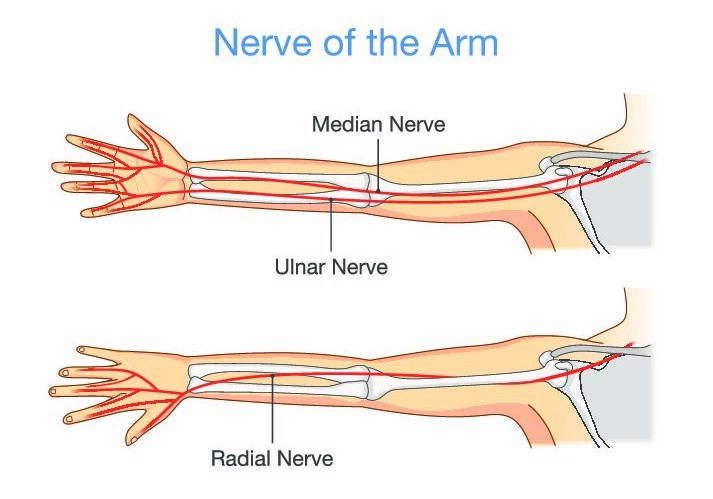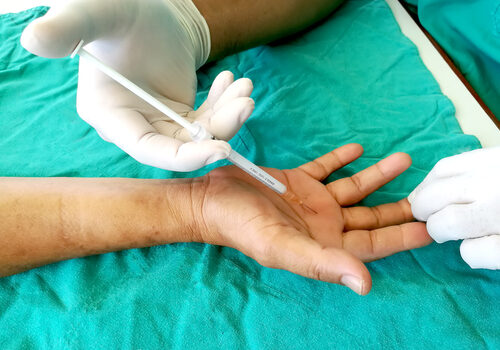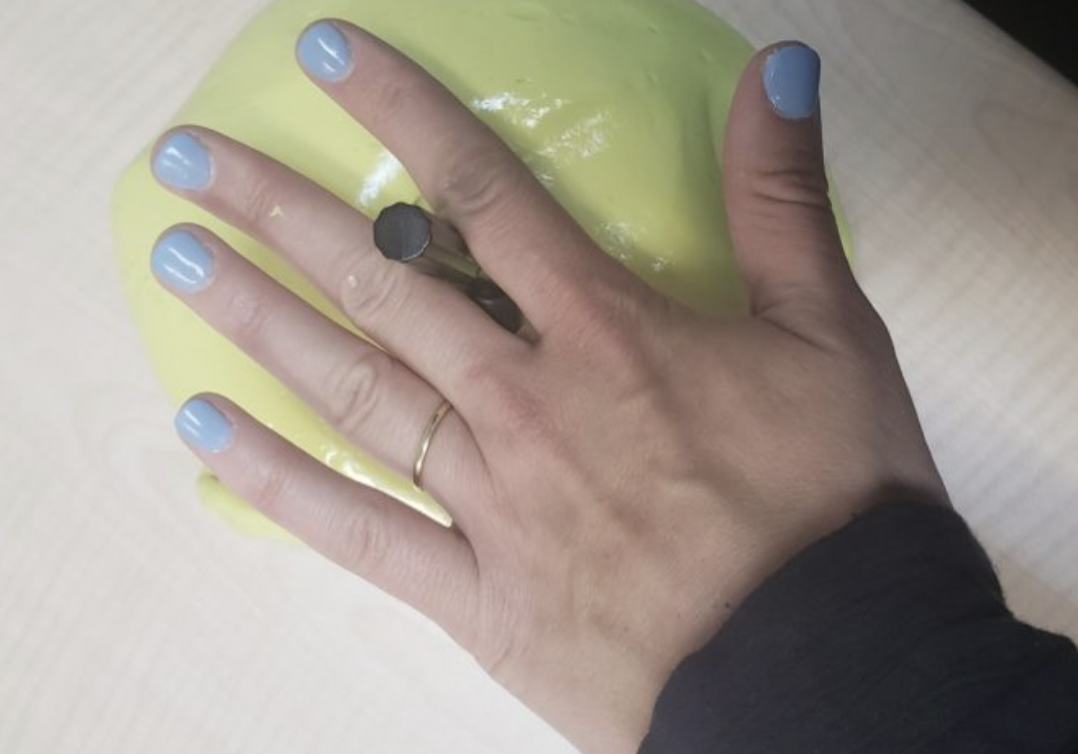6 of our Favorite Adaptive Equipment Tools for CMC Osteoarthritis
Filed under Treatments
Individuals struggling with osteoarthritis of the 1st CMC joint usually have difficulty with daily activities and it can become very frustrating. Everyday tasks such as cutting food, opening containers, and donning a button up shirt can become painful and slow. The largest contributor to the overall function of our hand is the thumb. If the goal of the client is to become more independent during their tasks, we need to address their pain, and we need a broad variety of options to do so.
There are a variety of ways to help treat and manage osteoarthritis and one of the more effective strategies, as therapists, is the use of adaptive equipment for hands. Button hooks, built up handles on utensils, and jar openers are a few of the common equipment options you will find in our clinic. Although, these are the common options, patients will do their own searches on the internet and find other equipment as well. Below you will find a list of some of our favorite adaptive equipment for osteoarthritis and a few tips on how and why to use each one.
Here’s a list of adaptive equipment for arthritis in hands and fingers (our 6 most favorite ones):
1· Built up handles on a silverware to complete eating activities without pain. The built up handles on the silverware can be used to decrease the amount of load placed on the joints of the thumb. They can also use built up handles with the foam by cutting the foam lengthwise and opening them up to build up the grip for larger objects such as a golf club handle, the handle to a pot or pan, or a wire whisk.
2· A rocker knife to increase independence while decreasing painful forces when cutting food. The use of a rocker knife will change the grip used when cutting food. Rather than a diagonal knife grasp that puts force through the radial side of the hand and 1st metacarpal, the rocker knife loads the whole hand which distributes the force over a larger surface area.
3· Dycem sheets to wrap around container lids or other items to help with grip strength. The dycem creates a surface that is easier for others to grip, as well as the dycem gripping to the object or lid to a jar.
4· A button hook to help with buttons in order to dress independently without pain. A button hook will take the pressure off of the fingers and thumb when pushing the button through the hole on a shirt or pants. With the button hook, the wire end will slide through the buttonhole and loop around the button and pull it through the hole, rather than pinching and pushing with the person’s fingers to get button up the shirt or pants.
5· Among other adaptive tools for hands there’s also such a tool as an adaptive mouse, for those individuals at work who use a computer most of the day, to decrease the amount of tension placed on the wrist, thumb, or other parts of the hand. The adaptive mouse places the wrist and hand in a mechanically efficient position when completing work tasks on a computer.
6· An adaptive jar/can/bottle opener for those who have difficulty with opening a jar, can, or a water bottle. This tool will allow the individual a variety of ways for the individual to remove a lid. Whether that be a water bottle, can of soda, or a jar. This object can be useful in many ways and can provide the individual many ways to efficiently and effectively remove a lid with little to no pain.
The focus of the adaptive equipment is to make the task less painful and more mechanically efficient in order to decrease a person’s overall pain and increase the independent participation in functional daily activities. This equipment can work for a variety of people in a variety of ways. It is important to take an occupational profile for our clients and gauge which items can be most helpful.
What are some of your favorite pieces of equipment to ease the pain of arthritis?
8 Comments
Leave a Comment
More To Read
Differentiating Proximal Median Nerve Entrapment from Carpal Tunnel Syndrome
By: Brittany Day Proximal Median Nerve Entrapment, Pronator Syndrome, or Lacertus Syndrome? Pronator syndrome is a term used to describe proximal median nerve entrapment (PMNE) in the forearm. Pronator syndrome and lacertus syndrome are sometimes used interchangeably to describe proximal median nerve entrapment distal to the ligament of Struthers and proximal to the flexor superficialis…
Read MorePros and Cons of Cortisone Injections
By: Shruti Jani Patients will often times ask the therapist their opinion on cortisone injections. Cortisone injections can be very helpful and significantly reduce inflammation, however, some therapists feel this can mask the pain not treating the true root cause of the problem. This is often debated among therapists. A short synopsis of the pros…
Read MoreIntrinsic Hand Strengthening with Puttycise Tools
We are always looking for ways of the intrinsic hand strengthening. It is easy to overlook the importance of these small but mighty muscles. They are essential to performing functional grasps patterns. They can become weak in a short period of time due to their small size. So, How does intrinsic strengthening work?! The Basics…
Read MoreSign-up to Get Updates Straight to Your Inbox!
Sign up with us and we will send you regular blog posts on everything hand therapy, notices every time we upload new videos and tutorials, along with handout, protocols, and other useful information.






A very informative article. I am an OTA and also have osteoarthritis in both CMCs. I hope lots of others take time to read.
We have lots of other CMC content. We cover splinting in one of our videos. Glad you liked the post!
A round pizza cutter with a large handle to cut meat, sandwiches, etc!
Inner lip plates to be more aesthetically appropriate for adults rather than plate guards or scoop bowls!!
Non slip fabric to hold mixing bowls, plates, etc .
Using an electric toothbrush with a large barrel for good oral care
All great suggestions! Thanks!
Any suggestions for the throttle control on electric bikes? My hand hurts all day after just a short ride.
I might check with the bike shop and see if they have any adapted contorls
Any recommendations for an automatic electric toothpaste dispenser?
Nothing comes to mind off the top of my head. Let us know if you find anything you really like and we can share it.